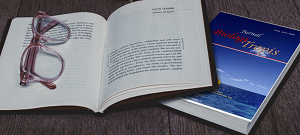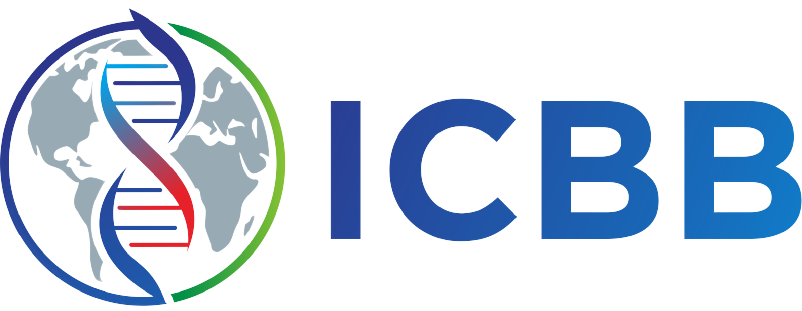Culture of Spiny Lobster in Multi-level Floating Net Cage System Integrated with Snubnose Pompano and Abalone Shells
Authors
Muhammad Junaidi , Nanda Diniarti , Septiana Dwiyanti , Damai Diniariwisan , Muhammad SumsantoDOI:
10.29303/jbt.v25i1.7955Published:
2025-03-30Issue:
Vol. 25 No. 1 (2025): Januari - MaretKeywords:
co-cultur; lobsters estate; environmentally friendlyArticles
Downloads
How to Cite
Downloads
Metrics
Abstract
Modification of floating net cages (FNC) to multi-level floating net cages (MFNC) is one of the integrated cultivation options which is believed to be able to increase production capacity without increasing the horizontal area of the cultivation area. Therefore, research was conducted with the aim of comparing the growth performance, survival and physiological behavior of lobsters cultivated in FNC and MFNC. The research method used was a field experiment with comparative analysis between lobster cultivation using the MFNC and FNC systems where each treatment was repeated 3 times. The parameters observed were growth performance, survival and physiological behavior of lobsters, growth and survival of snubnose pompano and abalone as well as water quality. Data analysis was carried out using the paired sample t test. The results of the research showed that there were no significant differences in the growth performance, survival and physiological behavior of lobsters reared using multi-level floating net cages and floating net cages (p > 0.05). Thus, the application of the multi-level floating net cage system in lobster cultivation is efficient in optimal use of space. Apart from that, the water quality of Ekas Bay is classified as suitable as a cultivation area for lobster, snubnose pompano and abalone, where cultivation activities using a multi-level net cage system do not have an impact on water quality, especially the parameters of temperature, pH, dissolved oxygen and salinity.
References
Amin, M., Bolch, C. J. S., Adams, M. B., & Burke, C. M. (2020). Growth enhancement of tropical abalone, Haliotis asinina L, through probiotic supplementation. Aquaculture International, 28(2), 463–475. https://doi.org/10.1007/s10499-019-00473-4
Azizah, I., Rejeki, S., & Ariyati, R. W. (2018). Growth Performance of the Tiger Shrimp (Penaeus monodon) Cultivated with Seaweed (Gracilaria sp.) using the Integrated Multi-Trophic Aquaculture (IMTA) System. Jurnal Sains Akukultur Tropis, 2, 1–11.
Baltadakis, A., Casserly, J., Falconer, L., Sprague, M., & Telfer, T. (2020). European lobsters utilise Atlantic salmon wastes in coastal integrated multi-trophic aquaculture systems. Aquaculture Environment Interactions, 12, 485–494. https://doi.org/10.3354/aei00378
Barrington, K., Chopin, T., & Robinson, S. (2009). Integrated multi-trophic aquaculture (IMTA) in marine temperate waters. In D. Soto (Ed.), Integrated Mariculture A Global Review. FAO Fisheries and Aquaculture Technical Paper 529 (p. 183). FAO Fisheries and Aquaculture Technical Paper 529.
Blaxhall, P. C., & Daisley, K. W. (1973). Routine haematological methods for use with fish blood. J. Fish Biol., 5, 771–781.
Budiyanto, B. (2021). Pendekatan Sosio-Spasial Budidaya Lobster Pada Zona Wilayah Teluk Ekas Lombok Nusa Tenggara Barat. Jurnal Pengelolaan Perikanan Tropis, 05(02).
Cahya, M. D., Yustiati, A., & Andriani, Y. (2021). Sistem Budidaya Polikultur dan Integrated Multi Trophic Aquaculture (IMTA) di Indonesia: Sebuah Ulasan. Torani: Journal of Fisheries and Marine Science, 4(2), 72–85.
Campa-Córdova, A. I., Hernández-Saavedra, N. Y., De Philippis, R., & Ascencio, F. (2002). Generation of superoxide anion and SOD activity in haemocytes and muscle of American white shrimp (Litopenaeus vannamei) as a response to β-glucan and sulphated polysaccharide. Fish and Shellfish Immunology, 12(4), 353–366. https://doi.org/10.1006/fsim.2001.0377
Darwantin, K., Sidik, R., & Mahasri, G. (2016). Efisiensi Penggunaan Imunostimulan dalam Pakan Terhadap Laju Pertumbuhan, Respon Imun dan Kelulushidupan Udang Vannamei (Litopenaeus vannamei). Jurnal Biosains Pascasarjana, 18(2), 123. https://doi.org/10.20473/jbp.v18i2.2016.123-139
Hidayat, K. H., Yulianto, H., Ali, M., Noor, N. M., & Putri, B. (2019). Performa pertumbuhan bawal bintang Trachinotus blochii yang dibudidaya dengan sistem monokultur dan polikultur bersama kerang hijau Perna viridis. Depik, 8(1), 1–8. https://doi.org/10.13170/depik.8.1.12542
Istikomah, I., Setiawan, A., Adiputra, Y. T., Supono, S., & Sarida, M. (2023). Diversitas Ektoparasit pada Ikan Bawal Bintang (Trachinotus blochii) Budi Daya di Teluk Lampung. Journal of Tropical Marine Science, 6(1), 31–37. https://doi.org/10.33019/jour.trop.mar.sci.v6i1.3809
KKP. (2021). Statistik Kementrian Kelaytan dan Perikanan. Kementerian Kelautan Dan PerikananKementrian Kelaytan Dan Perikanan. https://statistik.kkp.go.id/home.php
Liu, O. R., Molina, R., Wilson, M., & Halpern, B. S. (2018). Global opportunities for mariculture development to promote human nutrition. PeerJ, 1–18. https://doi.org/10.7717/peerj.4733
Marpaung, F. F., Pranowo, W. S., Purba, N. P., Yuliadi, L. P. S., Syamsudin, M. L., & Setyawidati, N. A. R. (2015). Kondisi Perairan Teluk Ekas Lombok Timur Pada Musim Peralihan. Jurnal Akuatika, 6(2), 198–205.
Nur, K. U. (2020). Budidaya Abalon di Asia : Teknologi dan Manajemen Budidayanya. Media Akuatika : Jurnal Ilmiah Jurusan Budidaya Peraira, 5(3), 95–106.
Prabu, D. L., Ebeneezar, S., Chandrasekar, S., Anikuttan, K. K., Sayooj, P., & Vijayagopal, P. (2021). Culture of snubnose pompano, Trachinotus blochii (Lacepede, 1801) in indigenous re-circulatory aquaculture system using low cost fishmeal-based diet. Indian Journal of Geo-Marine Sciences, 50(10), 787–794.
Prema, D. (2013). Site selection and water quality in mariculture. Training Manual on Cage Culture of Marine Fin fish and Shell fish in Open Sea. (Issue 1603, p. 11). Central Marine Fisheries Research Institute.
Putro, S. P., Widowati, Suhartana, & Muhammad, F. (2015). The Application of Integrated Multi Trophic Aquaculture ( IMTA ) Using Stratified Double Net Rounded Cage ( SDFNC ) for Aquaculture Sustainability. Internastional Journal of Science and Engineering (IJSE), 9(October), 85–89.
Radiarta, I. N., & Erlania. (2015). Indeks Kualitas Air dan Sebaran Nutrien sekitar Budidaya Laut Terintergrasi di Perairan Teluk Ekas, Nusa Tenggara Barat: Aspek Penting Budidaya Rumput Laut. Jurnal Riset Akuakultur, 10(1), 141–152. https://doi.org/10.15578/jra.10.1.2015.141-152
Radiarta, I. N., & Erlania, E. (2016). Performa Komoditas Budidaya Laut Pada Sistem Integrated Multi-Trophic Aquaculture (Imta) Di Teluk Gerupuk, Lombok Tengah, Nusa Tenggara Barat. Jurnal Riset Akuakultur, 11(1), 85. https://doi.org/10.15578/jra.11.1.2016.85-97
Radiarta, I. N., & Haryadi, J. (2015). Analisis pengembangan perikanan budidaya berbasis ekonomi biru dengan pendekatan analytic hierarchy process (AHP). J. Sosek KP, 10(1), 47–59.
Ren, J. S., Stenton-dozey, J., Plew, D. R., Fang, J., & Gall, M. (2012). An ecosystem model for optimising production in integrated multitrophic aquaculture systems. Ecological Modelling, 246, 34–46. https://doi.org/10.1016/j.ecolmodel.2012.07.020
Ridwanudin, A., Anggorowati, D. A., Sujangka, A., Badi, B. F., & Wahab, A. (2022). Pengaruh Penggunaan Pakan Buatan Berbahan Baku Tepung Makroalga Hijau Ulva sp . terhadap Pertumbuhan Abalon Haliotis squamata E-mail : [email protected] Abstrak Pendahuluan. Oseanologi Dan Limnologi Di Indonesia, 7(200), 53–63. https://doi.org/10.14203/oldi.2022.v7i2.400
Solanki, Y., Jetani, K. L., Khan, S. I., Kotiya, A. S., Makawana, N. P., & Rather, M. A. (2012). Effect of stocking density on growth and survival rate of Spiny Lobster ( Panulirus polyphagus ) in cage culture system. International Journal of Aquatic Sciecne, 3(1), 1–14.
Taridala, S. A. A., Nusavista, R., Saediman, H., Limi, M. A., Salam, I., Garafuddin, A., & Patadjai, A. B. (2020). Market structure of abalone (Haliotis asinina ) in Southeast Sulawesi , Indonesia. International Conference on Agriculture, Environment and Food Security:2020, 1–9. https://doi.org/10.1088/1755-1315/782/2/022039
Triarso, I., & Putro, S. P. (2019). Pengembangan Budidaya Perikanan Produktif Berkelanjutan Sistem IMTA (Integrated Multi-Trophic Aquaculture) (Studi Kasus di Kep. Karimunjawa, Jepara). Life Science, 8(2), 192–199.
Troell, M., Joyce, A., Chopin, T., Neori, A., Buschmann, A. H., & Fang, J. G. (2009). Ecological engineering in aquaculture - Potential for integrated multi-trophic aquaculture (IMTA) in marine offshore
License
Copyright (c) 2025 Muhammad Junaidi, Nanda Diniarti, Septiana Dwiyanti, Damai Diniariwisan, Muhammad Sumsanto

This work is licensed under a Creative Commons Attribution 4.0 International License.

Jurnal Biologi Tropis is licensed under a Creative Commons Attribution 4.0 International License.
The copyright of the received article shall be assigned to the author as the owner of the paper. The intended copyright includes the right to publish the article in various forms (including reprints). The journal maintains the publishing rights to the published articles.
Authors are permitted to disseminate published articles by sharing the link/DOI of the article at the journal. Authors are allowed to use their articles for any legal purposes deemed necessary without written permission from the journal with an acknowledgment of initial publication to this journal.


























